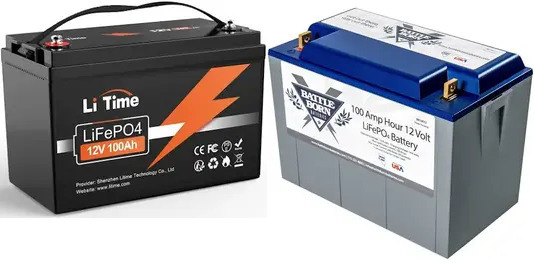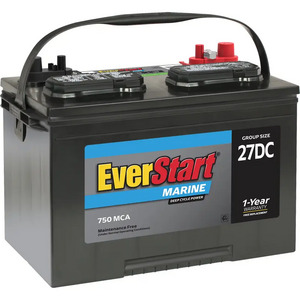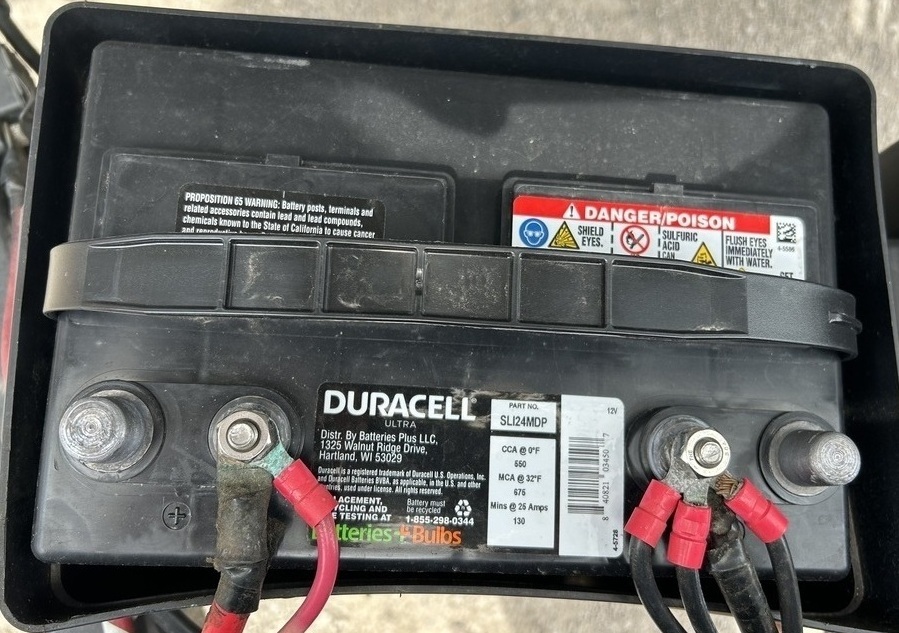Lithium-ion batteries are the latest and greatest RV battery on the market and what most folks want to buy. But that decision is a bit similar to the decision whether or not to purchase solar panels. Do you really need a more expensive lithium RV battery or would a lead-acid battery (that most likely was included with your RV purchase) suit your power needs just fine?
Whatever you decide to do, it’s super important to understand your particular RV battery power needs first. How many watts do you need per day to camp comfortably when off grid? How many amp hours (AH) does your battery bank need to provide?
Related post: How to Calculate How Much RV Battery Power You Need
The biggest difference between lithium and lead-acid batteries is their rate of disharge
Rate of battery discharge is how fast a battery can be fully discharged relative to its maximum capacity without causing damage, often referred to as “C-rate.” A 1 C-rate means that the battery will discharge in 1 hour. A 100 AH battery at this rate would discharge 100 amps in an hour. A 2 C-rate for this battery indicates it would discharge 200 amps for 30 minutes. More detailed information can be found here: What is a Battery C Rating?

Battery capacity is how much power is stored in an RV battery, typically measured in amp hours. The AH number you see on your battery represents how much power (DC electrical current) it can supply for one hour before it goes dead. So a 200 AH battery provides a 200 amp current for one hour before it needs to be charged back up.
Do we use RV batteries at full capacity for just one hour? Not usually! That number just gives you the approximate amount of battery power you have available. Take note of the word “approximate.” A lithium battery will provide 100% of its rated capacity regardless of the rate of discharge. A lead-acid battery, on the other hand, will provide only around 50% of the rated capacity. You can run it down more, but that may damage the battery.
That is the primary advantage of lithium RV batteries. You can use the battery to full capacity without worrying about running it down past a certain percentage of disharge and damaging it.
Lithium batteries have a longer lifespan and faster charging time
Another benefit of lithium batteries is they last longer than lead acid. A lithium battery has a lifespan of around 10—15 years while a lead-acid battery will last approximately 2—8 years. Absorbed glass mat (AGM) lead-acid batteries are the longest lasting out of the three types of lead acid RV batteries i.e. flooded, gelled, or AGM.
Lithium batteries charge up faster as well. How quickly depends on the brand and type of battery you purchase of course. But in general, expect around three hours or less to power back up a lithium RV battery and more than 10 hours to recharge a lead-acid battery.
Lead-acid batteries are less expensive

Lead-acid RV batteries are very inexpensive. The cheap lead-acid marine deep cycle battery I used in my little 16ft travel trailer was around $100.
Lithium batteries are triple in cost or more (less if on sale, shop around), depending on what you purchase. Both are capable of powering your rig for many amazing camping adventures but if you are planning to go off grid regularly for a few days or more you probably want to invest in a more powerful and longer-lasting lithium battery.
Happy trails. 🙂

